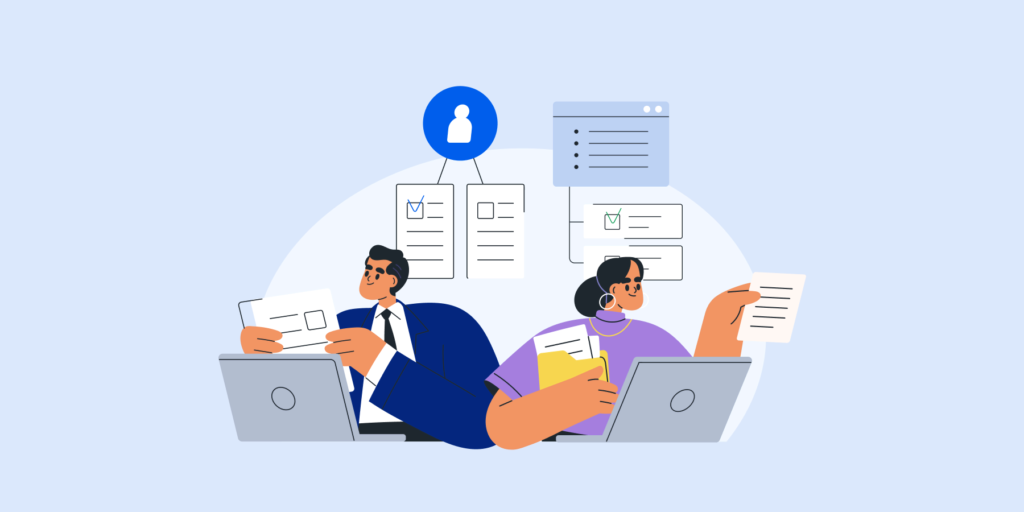The Evolving Landscape of Cloud Security
As enterprises propel themselves into the cloud era, they unlock unprecedented innovation and operational efficiency. Yet, this digital transformation doesn’t come without its share of complexities, particularly in the realm of security.
In this article, we’ll explore the evolving cloud security landscape not only for 2024 but for the years to come. We’ll unravel critical threats, examine striking statistics, and present GAT Labs’ role in mitigating these risks.
Navigating the Cloud Security Terrain: Unveiling Threats
Misconfigurations:
As enterprises embrace cloud services, misconfigurations in settings and permissions become a significant vulnerability. Cloud misconfiguration refers to any glitches, gaps, or errors that could expose your environment to risk during cloud adoption. These cyber-threats come in the form of security breaches, external hackers, ransomware, malware, or insider threats that use vulnerabilities to access your network.
Insecure Interfaces/APIs:
As cloud environments expand, so does the risk of unauthorized data access. Weak authentication mechanisms and improper access controls can compromise sensitive data.
Unauthorized Access:
The risk of unauthorized access to data persists as cloud environments expand. Weak authentication, stolen credentials, or insider threats can lead to unauthorized access, resulting in data breaches.
DDoS Attacks:
Distributed Denial of Service (DDoS) attacks can cripple cloud services, disrupting operations and causing downtime. Attackers can overwhelm resources and render services unavailable to users.
IoT Vulnerabilities:
The integration of Internet of Things (IoT) devices introduces new attack surfaces. Inadequate security measures on IoT devices can be exploited to gain unauthorized access.
Cloud Security Statistics, what Google Admins need to know
The numbers paint a compelling picture of the urgency surrounding cloud security:
- ▪️ By 2027, more than 50% of enterprises will use industry cloud platforms to accelerate their business initiatives.
- ▪️ In 2023, 31% of global enterprise cloud decision-makers prioritize “cybersecurity” as their top investment, emphasizing its critical role. Source: Google Transform with Cloud Stats
- ▪️ API security concerns have led 53% of organizations to delay new service or application rollouts. Source: API Security: Latest Insights & Key Trends
- ▪️ Major cloud service providers encountered 6,000 malware samples actively communicating with them, underlining the magnitude of cloud security challenges.
Equipping Security Teams for the Cloud Challenge
Transitioning to the cloud demands a fresh perspective on security. Moreover, the traditional approach of copying and pasting security controls doesn’t suffice in this dynamic landscape. The speed and automation inherent to the cloud require native cloud security tools. Cybersecurity teams must be upskilled to wield these tools effectively. Investing in proper training ensures that your security teams are equipped to defend the cloud environment.
Mitigating Misconfigurations: Safeguarding Cloud Interfaces
As we’ve discussed, misconfigurations lie at the heart of many cloud breaches. Google admins may inadvertently expose interfaces and infrastructure to the internet, inviting attackers in. Whether unintentional or malicious, misconfigurations can evade detection without proper cloud security tools. Native cloud security solutions and proper training are essential to mitigate this risk.
Centralizing Risk Management in Multi-Cloud Environments
Multi-cloud environments offer flexibility but pose challenges in visibility and control. Hybrid setups span on-premises and multiple cloud providers, creating complexity for CISOs. To effectively manage risk, a centralized cloud security solution is crucial. It provides a comprehensive view of the risk posture across diverse environments, facilitating informed decisions.
Securing Cloud Identities: Curbing Unauthorized Access
Cloud identities are prime targets for attackers seeking unauthorized access. Moreover, with the dissolution of traditional network perimeters, cloud control planes become attractive targets.
The first and foremost of Google Workspace security tips is ensuring strong password and authentication usage across your company. Weak passwords, lack of multi-factor authentication, and compromised machines create vulnerabilities. A zero-trust approach and robust authentication are imperative. Ensuring stringent permissions for SaaS applications adds an extra layer of protection.
Strengthening Cloud Workload Protection
Cloud workloads share vulnerabilities common to any software. Missing patches, insecure coding, weak communication protocols, and excessive permissions are opportunities for attackers. Cloud workload protection mechanisms assess security posture throughout the lifecycle, mitigating risks in real-time. Effective controls within the pipeline fortify cloud defences against potential breaches.
Emerging Cloud Security Trends: Looking Ahead
As the cloud security landscape continues to evolve, it’s important for Google Admins to stay informed about emerging trends that could impact their organization’s security posture. While we’ve explored the challenges of 2023, let’s also take a glimpse into the near future.
▪️ Zero-Trust Architecture: The concept of zero-trust security is gaining traction, where organizations assume no implicit trust and verify every user and device attempting to access resources. Furthermore, this approach aligns well with the dissolution of traditional perimeters in cloud environments, making it a strategic consideration for Google Admins. To implement this approach effectively, consider leveraging tools like ActiveID to bolster your security measures and ensure a robust defense against evolving cyber threats.
▪️ Rise of AI-Driven Threat Detection: Artificial intelligence and machine learning are revolutionizing threat detection and response. Additionally, adaptive security solutions can analyze vast amounts of data to identify anomalies and patterns indicative of a breach. Google Admins should explore AI-driven tools to enhance their cloud security strategy.
▪️ Container Security: Containers have become a cornerstone of modern application development, but they also introduce new security challenges. Moreover, ensuring the security of containerized applications and their underlying infrastructure will be crucial as adoption continues.
▪️ Privacy-Enhancing Technologies: With increasing concerns about data privacy, encryption, and other privacy-enhancing technologies will play a significant role in cloud security. Therefore, Google Admins should evaluate encryption options and consider implementing data protection measures.
▪️ User and Entity Behavior Analytics (UEBA): Understanding normal user behavior can aid in detecting insider threats and compromised accounts. Additionally, UEBA solutions can analyze user activities to identify deviations that might signal a security incident.
Empowering Enterprises Against Cloud Threats with GAT Labs
In the face of cloud security challenges, GAT Labs emerges as a powerful ally:
Complete Content Search and Auditing:
GAT Labs’ robust auditing capabilities offer domain-wide auditing of files and emails. This extensive search and filter system allows administrators to swiftly identify vulnerabilities, such as misconfigurations, and take prompt actions.
Actionable Insights and Policy Enforcement:
GAT Labs’ insights empower administrators to assess third-party applications, enhancing policy enforcement. Moreover, synced apps and devices in a Google Workspace may lead to unwanted security incidents. By identifying and managing risky applications, organizations can safeguard their cloud environment.
Activity and Engagement Monitoring:
GAT Labs goes beyond basic file-sharing monitoring. It measures user activity and engagement, providing real insights into collaboration dynamics. Abnormal behaviours trigger alerts, enabling rapid responses to potential threats.
Elevated Security Management:
GAT Unlock introduces a two-person approval system for high-impact security tasks. Additionally, this ensures that actions involving sensitive data receive oversight, reducing the risk of unauthorized access.
Conclusion: Safeguarding the Future of Cloud Security
By staying informed about emerging trends and incorporating them into your cloud security strategy, you’ll be better equipped to protect your organization’s sensitive data and assets.
Finally, let GAT Labs help you in your quest for better cloud security. By harnessing the expertise and solutions offered by GAT Labs in conjunction with strategic practices, organizations can avoid these challenges, thereby fortifying their data and operations against looming threats.
Insights That Matter. In Your Inbox.
Join our newsletter for practical tips on managing, securing, and getting the most out of Google Workspace, designed with Admins and IT teams in mind.





